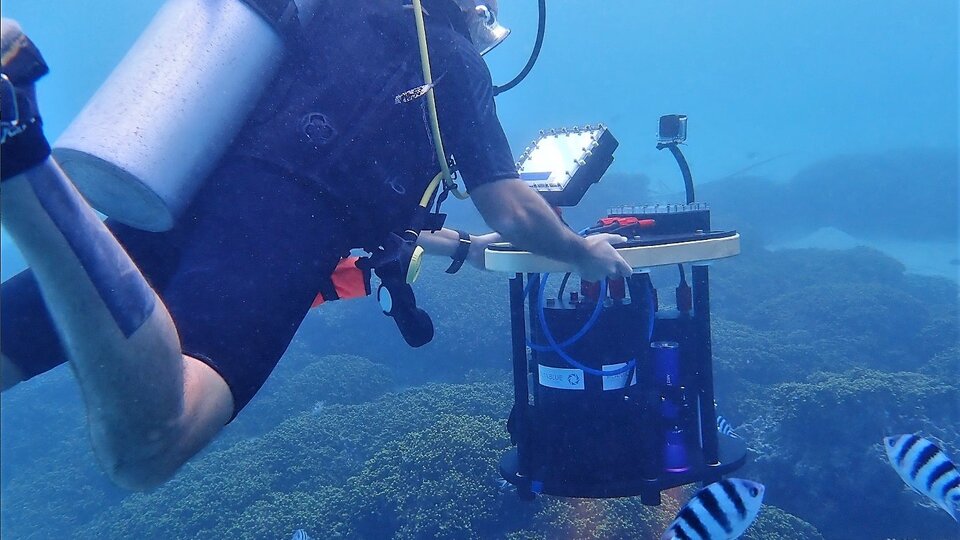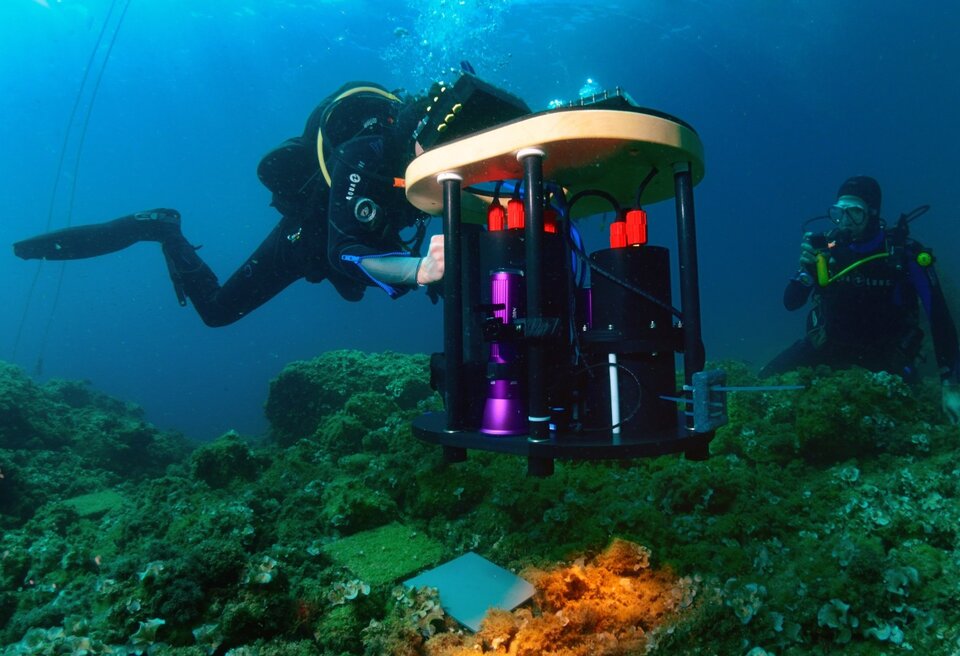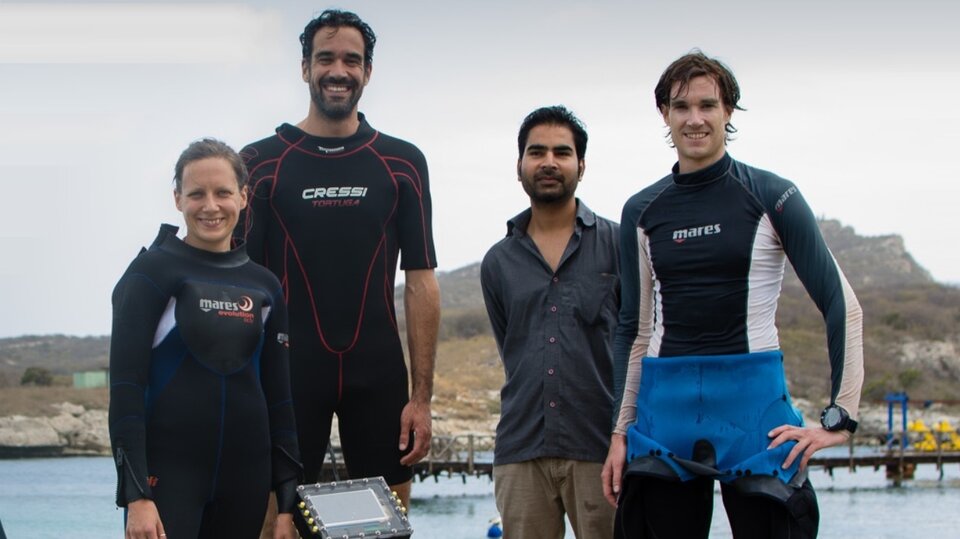PlanBlue: Ready to revolutionise the way we map and interpret our seafloors
The German start-up company PlanBlue offers a new seafloor monitoring technology, DiveRay, to map, assess and even understand better the seafloor. Meet PlanBlue at ESA's Start-ups Zone powered by ESA space solutions at IAC 2018.

The DiveRay is an intelligent hyperspectral underwater camera, that automatically scans seafloor areas, as well as lake bottoms and river beds. It makes use of hyperspectral imaging. The core of the technology is its software based on machine-learning algorithms.
The DiveRay significantly reduces the time spent both below and above water, and the big amount of data obtained b y the DiveRay is objective and can easily be compared to future studies.
To date, there is no efficient unbiased and objective monitoring technology available when estimating the “health” status of seafloor areas or the state of underwater constructions. Most methods are labour intensive and rely on the interpretations of the people that investigate the data.
PlanBlue hyperspectral underwater camera

The DiveRay technology is one of the first standardized methods in environmental monitoring.
Not only is the DiveRay faster, more accurate and more cost-efficient than traditional monitoring methods, it also collects data in much more detail, making the invisible visible on the seafloor via its sophisticated camera.
Furthermore, the DiveRay’s software HyperSuite can automatically analyze data, summarize statistics for e.g. scientists, or directly translate and visualize this data in easy interpretable colour coded maps.
Such maps can inform and educate, for example, the general public of the seafloor’s well-being, but also help policy-makers and coastal managers to make the right decisions to properly protect and conserve these ecosystems.
The prototype developed by PlanBlue weighs 25kg. In August, it was used to identity flora and fauna present on the artificial reefs of the Larvotto Marine Reserve in Monaco.
Operating the DiveRay and its technology
The DiveRay technology is based on the HyperDiver technology developed at the Max Planck Institute in Bremen. In the following video you can see the DiveRay in action.
What can you do with the DiveRay technology?
The DiveRay have many applications, including:
- Long-time monitoring of seafloors, lake bottoms and river beds
- Conduct environmental impact analyses
- Inspect underwater constructions/repairs
- Scientific research e.g. detect notorious algae, bleaching of corals, presence of coral-killing starfishes
- Help explore the unknown 95% of our oceans
The obtained data can be presented in the form of interactive colour-coded maps.
Depending on the user’s requirements features on the maps can be highlighted indicating e.g. where are invasive algae?, where is it best to build underwater?, what is the impact of a nearby construction site?. Many other types of visualizations and statistical summaries are possible.
Start-up PlanBlue Team

Co-founders of the German start-up PlanBlue GmbH are Dr. Joost den Haan (CEO), Guy Rigot (CTO), Raja Kandukuri (CIO) and Dr. Hannah Brocke (COO). Nils Öhlmann recently joined the team as Development Engineer.
Currently, PlanBlue joined a NASA EPSCoR project on Guam and runs a pilot with The Ocean Cleanup to monitor plastic pollution.
World's largest ecosystem for space-related entrepreneurship
ESA’s Technology Transfer and Business Incubation Programme Office (TTPO) operates the ‘ESA space solutions’ network of Business Incubation Centres (ESA BICs) and Technology Transfer Brokers offering complete access to all aspects of space-related innovation, technology and intellectual properties and is a gateway to ESA and European space research and developments.
Today, there are 20 ESA BICs in 17 European countries – Austria, Belgium, Czech Republic, Estonia, Finland, France, Germany, Hungary, Ireland, Italy, Norway, Portugal, Spain, Sweden, Switzerland, the Netherlands and UK – forming the largest ecosystem in the world for space-related entrepreneurship.
Over 650 start-ups have been fostered and another 150 new start-ups are taken in yearly at ESA BICs to be supported under the two-years business development boosting programme.
Visit “Start-ups Zone powered by ESA space solutions”
Meet all the start-ups from 1 October until 5 October at the dedicated Start-ups Zone powered by ESA space solutions at IAC 2018 area at IAC 2018.
The PlanBlue entrepreneurs will be at the Start-ups Zone at IAC 2018 from 3 October noon until 5 October, and be pitching their business 4 October.



